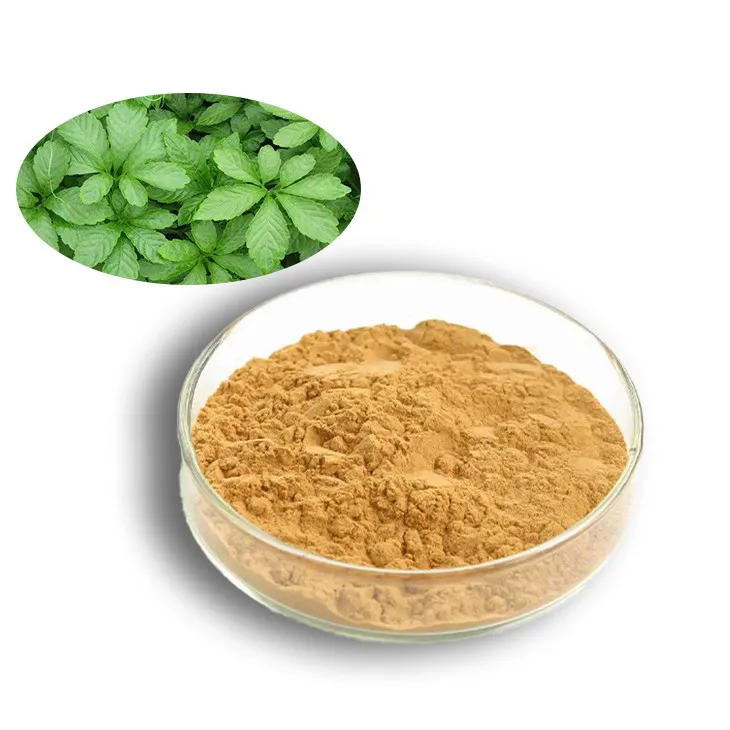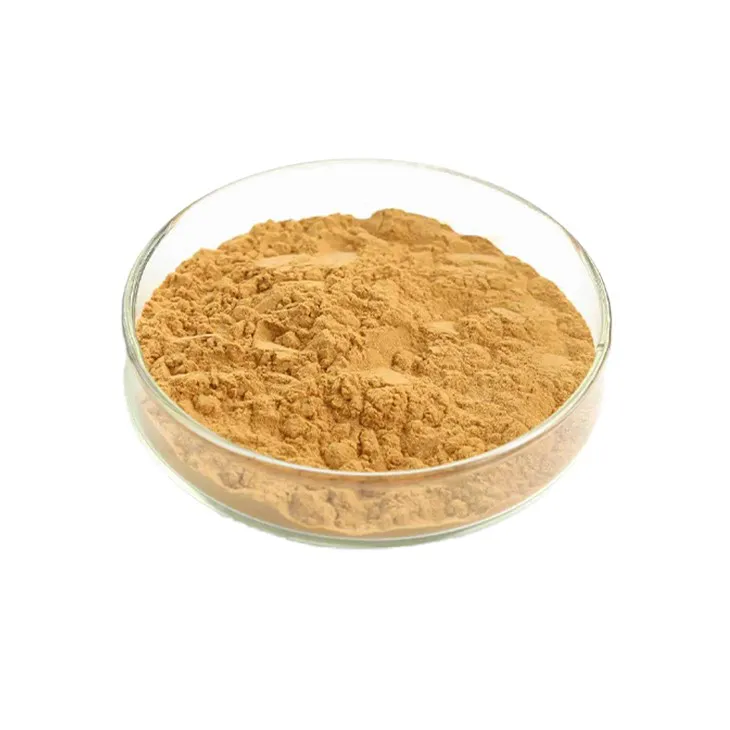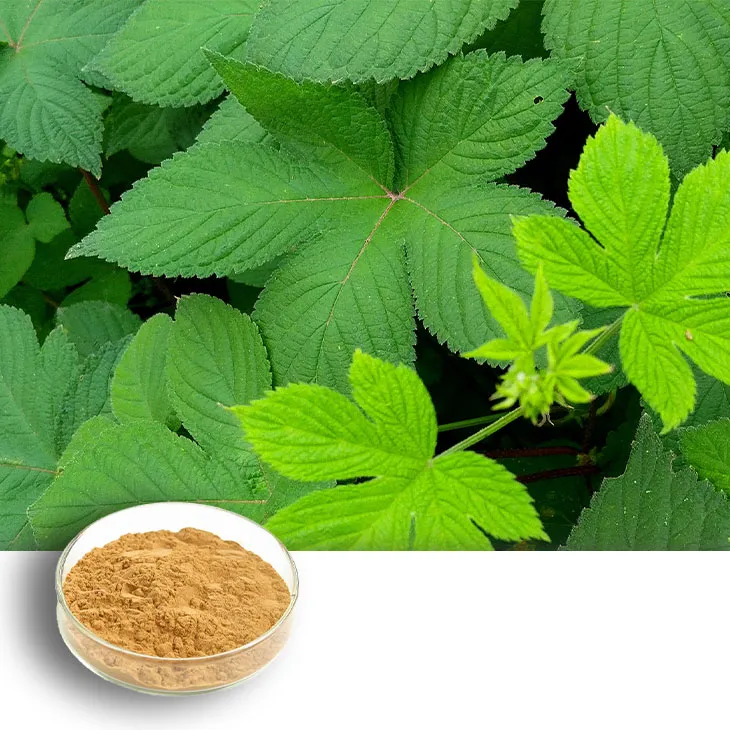- 0086-571-85302990
- sales@greenskybio.com
Is Gynostemma pentaphyllum extract beneficial for diabetes? Are these all safe and applicable for diabetic patients?
2024-11-13

1. Introduction
Diabetes mellitus is a chronic metabolic disorder that has reached epidemic proportions globally. Management of diabetes often involves a combination of lifestyle modifications, medications, and sometimes complementary and alternative therapies. Gynostemma pentaphyllum, a traditional Chinese medicinal herb, has been claimed to possess various health - promoting properties, including potential benefits for diabetes. However, it is crucial to thoroughly explore its impact on diabetes and its safety for diabetic patients.

2. Gynostemma pentaphyllum: An Overview
2.1 Botanical Characteristics
Gynostemma pentaphyllum, also known as "Jiaogulan" in Chinese, is a perennial climbing vine. It belongs to the Cucurbitaceae family. The plant has characteristic five - leaflet compound leaves and small greenish - white flowers. It is mainly distributed in certain regions of Asia, such as China, Japan, and Korea.2.2 Traditional Use
In traditional Chinese medicine (TCM), Gynostemma pentaphyllum has been used for centuries. It was often consumed as a tea or herbal decoction. It was believed to have effects such as strengthening the body, enhancing immunity, and relieving fatigue. Over time, its potential role in managing various diseases, including diabetes, has attracted increasing attention.
3. Potential Benefits for Diabetes
3.1 Hypoglycemic Effects
- Some studies have suggested that Gynostemma pentaphyllum extract may have hypoglycemic effects. It is proposed that certain components in the extract, such as gypenosides, may play a role in regulating blood glucose levels.
- Gypenosides are believed to enhance insulin sensitivity. Insulin resistance is a key factor in type 2 diabetes. By improving insulin sensitivity, the body can more effectively utilize insulin to regulate blood sugar, thereby reducing hyperglycemia.
- Animal studies have shown that Gynostemma pentaphyllum extract can lower blood glucose levels in diabetic animal models. For example, in rats with chemically - induced diabetes, treatment with the extract led to a significant decrease in fasting blood glucose levels over a certain period.
3.2 Antioxidant and Anti - inflammatory Properties
- Diabetes is often associated with increased oxidative stress and chronic inflammation. Gynostemma pentaphyllum extract contains antioxidants such as flavonoids and polyphenols.
- These antioxidants can scavenge free radicals in the body, reducing oxidative damage to cells. In diabetic patients, this can help protect pancreatic beta - cells (which produce insulin) from oxidative stress - induced damage, potentially preserving their function.
- The anti - inflammatory properties of the extract may also contribute to diabetes management. Chronic inflammation can disrupt normal metabolic processes and is linked to insulin resistance. By reducing inflammation, Gynostemma pentaphyllum extract may indirectly improve glycemic control.
3.3 Lipid - Lowering Effects
- Abnormal lipid metabolism is common in diabetic patients. High levels of triglycerides, low - density lipoprotein (LDL) cholesterol, and low levels of high - density lipoprotein (HDL) cholesterol are often observed.
- Some research indicates that Gynostemma pentaphyllum extract may have lipid - lowering effects. It may help reduce triglyceride and LDL - cholesterol levels while increasing HDL - cholesterol levels. This lipid - modulating effect can be beneficial for diabetic patients, as it can reduce the risk of cardiovascular complications associated with diabetes.

4. Safety Considerations for Diabetic Patients
4.1 General Safety
- When used in moderation, Gynostemma pentaphyllum extract is generally considered safe for most people. However, individual responses may vary.
- Some people may experience mild side effects such as gastrointestinal discomfort, including nausea, bloating, or diarrhea. These side effects are usually transient and may subside as the body adjusts to the extract.
4.2 Interaction with Medications
- One of the major concerns for diabetic patients is the potential interaction between Gynostemma pentaphyllum extract and diabetes medications. Since many diabetic patients are taking medications such as metformin, sulfonylureas, or insulin, it is essential to consider possible interactions.
- There is a possibility that the extract could enhance the hypoglycemic effects of diabetes medications. This could lead to an increased risk of hypoglycemia (low blood sugar). For example, if a patient is already taking metformin to lower blood glucose and starts taking Gynostemma pentaphyllum extract without proper medical supervision, the combined effect may cause blood sugar levels to drop too low.
- Therefore, diabetic patients should consult their healthcare providers before starting to use Gynostemma pentaphyllum extract, especially if they are on multiple medications.
4.3 Quality and Purity of the Extract
- The safety and effectiveness of Gynostemma pentaphyllum extract also depend on its quality and purity. Different products on the market may vary in terms of the concentration of active components and the presence of contaminants.
- Poor - quality extracts may contain impurities such as heavy metals or pesticides, which can pose health risks. Diabetic patients should choose high - quality products from reliable sources to ensure safety.

5. Current Research Limitations
5.1 Lack of Large - Scale Clinical Trials
- While there are some promising pre - clinical and small - scale clinical studies on the effects of Gynostemma pentaphyllum extract on diabetes, there is a lack of large - scale, well - designed clinical trials.
- Large - scale trials are needed to confirm the long - term safety and effectiveness of the extract in diabetic patients. Without such trials, it is difficult to make definitive recommendations regarding its use in diabetes management.
5.2 Standardization of the Extract
- The lack of standardization in the production of Gynostemma pentaphyllum extract is another limitation. Different extraction methods can result in extracts with different compositions and potencies.
- This makes it challenging to compare the results of different studies and to ensure consistent quality of the product in the market. Standardization of the extract in terms of its active components is crucial for further research and its potential application in diabetes treatment.
6. Conclusion
Gynostemma pentaphyllum extract shows potential benefits for diabetes in terms of hypoglycemic, antioxidant, anti - inflammatory, and lipid - lowering effects. However, diabetic patients need to be cautious when considering its use. Safety concerns such as potential side effects, interactions with medications, and the quality of the extract must be taken into account. Moreover, more high - quality research, including large - scale clinical trials and standardization of the extract, is required to fully understand its role in diabetes management. Until then, diabetic patients should consult their healthcare providers before using Gynostemma pentaphyllum extract as a complementary therapy for diabetes.
FAQ:
Q1: What is Gynostemma pentaphyllum extract?
Gynostemma pentaphyllum extract is a substance obtained from the Gynostemma pentaphyllum plant. It contains various bioactive components such as gypenosides.
Q2: How might Gynostemma pentaphyllum extract be beneficial for diabetes?
Some studies suggest that it may help regulate blood sugar levels. It could potentially enhance insulin sensitivity, which means the body's cells can better respond to insulin. Also, it may have antioxidant effects that can protect pancreatic beta - cells (the cells that produce insulin) from damage.
Q3: Are there any clinical studies to prove its effectiveness on diabetes?
There have been some clinical and pre - clinical studies. However, more large - scale, well - designed clinical trials are still needed. Some small - scale studies have shown promising results in terms of blood glucose regulation, but the evidence is not yet conclusive.
Q4: Is Gynostemma pentaphyllum extract safe for all diabetic patients?
It is not necessarily safe for all. While generally considered to have low toxicity, some diabetic patients may be allergic to it. Also, it may interact with certain medications that diabetic patients are taking, such as blood - thinning medications or other drugs for diabetes management. So, it's crucial to consult a doctor before using it.
Q5: How should diabetic patients use Gynostemma pentaphyllum extract?
If a diabetic patient is advised by a healthcare professional to use it, they should follow the recommended dosage. It can be in the form of capsules, teas or extracts. But always under the supervision of a doctor, especially considering individual differences in health conditions and potential drug interactions.
Related literature
- The Potential of Gynostemma pentaphyllum in Diabetes Management"
- "Gynostemma pentaphyllum Extract: A Promising Natural Remedy for Diabetes? A Review of Current Research"
- "Clinical Studies on the Effects of Gynostemma pentaphyllum in Diabetic Patients"
- ▶ Hesperidin
- ▶ Citrus Bioflavonoids
- ▶ Plant Extract
- ▶ lycopene
- ▶ Diosmin
- ▶ Grape seed extract
- ▶ Sea buckthorn Juice Powder
- ▶ Fruit Juice Powder
- ▶ Hops Extract
- ▶ Artichoke Extract
- ▶ Mushroom extract
- ▶ Astaxanthin
- ▶ Green Tea Extract
- ▶ Curcumin
- ▶ Horse Chestnut Extract
- ▶ Other Product
- ▶ Boswellia Serrata Extract
- ▶ Resveratrol
- ▶ Marigold Extract
- ▶ Grape Leaf Extract
- ▶ New Product
- ▶ Aminolevulinic acid
- ▶ Cranberry Extract
- ▶ Red Yeast Rice
- ▶ Red Wine Extract
-
Lily extract
2024-11-13
-
Aminolevulinic acid
2024-11-13
-
Mulberry Extract
2024-11-13
-
Grape Seed Extract
2024-11-13
-
Maitake Mushroom Extract
2024-11-13
-
Kidney Bean Extract
2024-11-13
-
Honeysuckle Pollen
2024-11-13
-
Shikonin
2024-11-13
-
Pomegranate Extract
2024-11-13
-
Elderberry Extract
2024-11-13





















